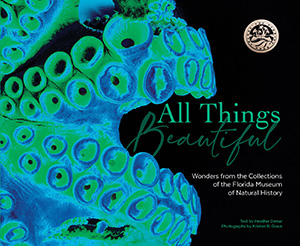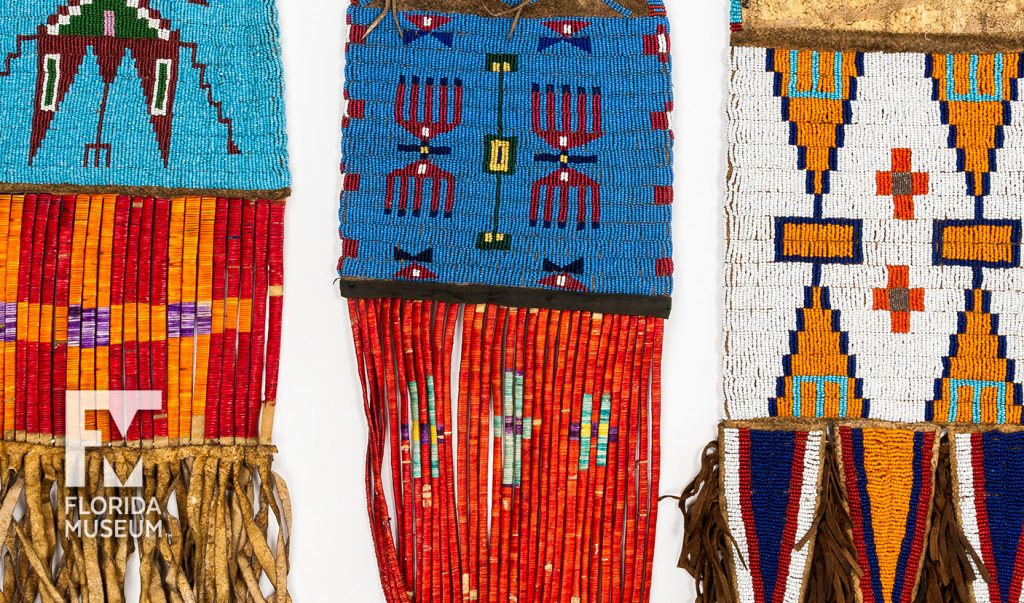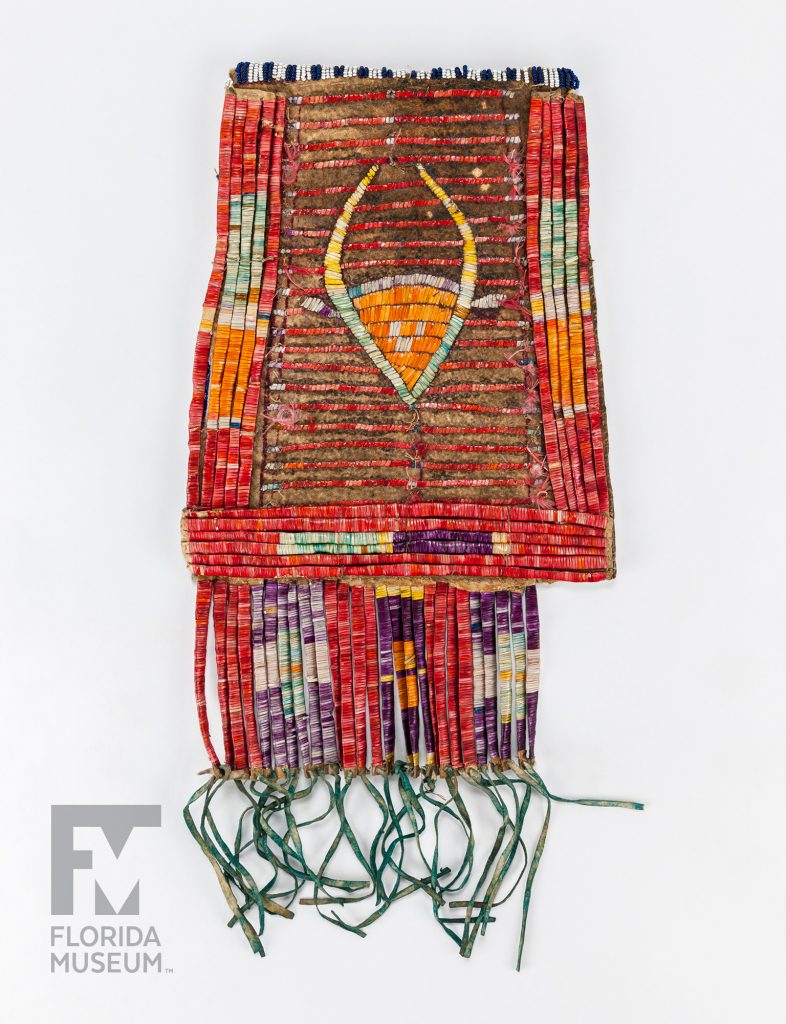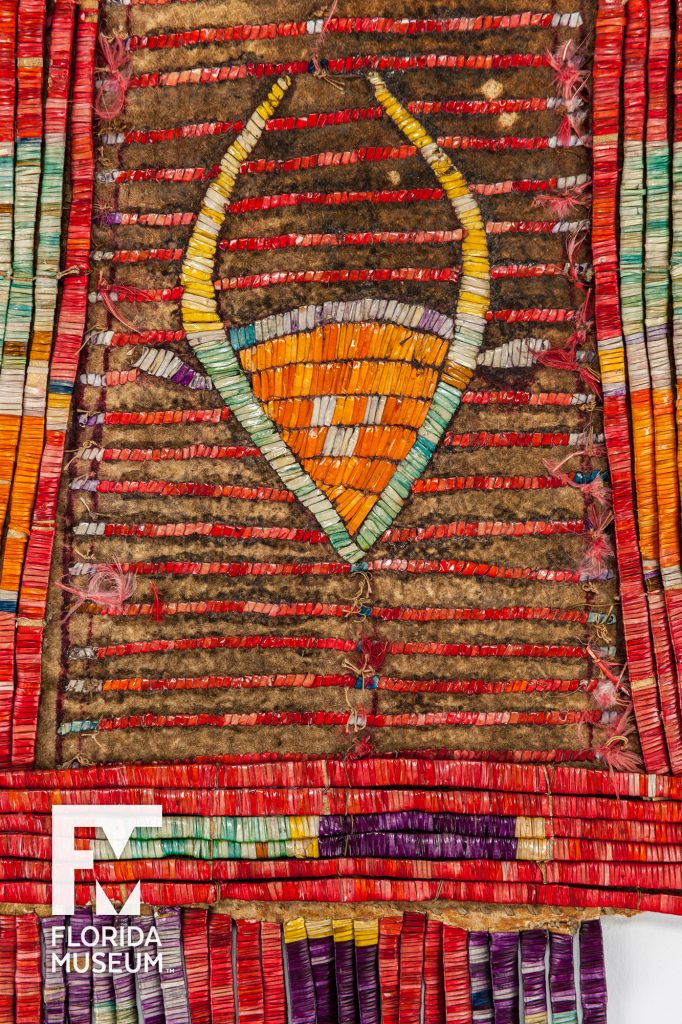The Lakota traditionally used dyed porcupine quills to ornament items such as tobacco pouches. Later, artists began to use glass beads acquired through trade with European-Americans.
Summary
Made by Lakota (Sioux) people, Great Plains, U.S.
Dates to ~1880
Collection
Story
The well-preserved dyed quillwork make this Lakota tobacco pouch rare and valuable. It represents traditional smoking paraphernalia from the Great Plains in the 1880s.
The central image depicts a bison, a sacred animal that was also a source of food and materials for clothing and furnishings in Plains Indian culture. Porcupine quillwork generally is earlier than beadwork in Plains Indian art. Later, artists began to use glass beads acquired through trade with European-Americans.
Susan Milbrath
Curator, Latin American Art and Archaeology*
Florida Museum of Natural History
Exhibit
On display Sept. 23, 2017-Jan. 7, 2018, Rare, Beautiful & Fascinating: 100 Years @FloridaMuseum celebrated the Museum’s rich history. Each Museum collection was asked to contribute its most interesting items and share the stories that make them special. Though the physical exhibit is closed, this companion website remains online, providing an opportunity to experience the Florida Museum’s most treasured specimens.
Exhibit Area: Objects Tell Stories
Theme: Beautiful Artistry
 Want to see more? Explore more than 300 breathtaking color photos of plants, animals, fossils and cultural heritage materials from the Florida Museum of Natural History’s collections in the award-winning book All Things Beautiful available from the University Press of Florida.
Want to see more? Explore more than 300 breathtaking color photos of plants, animals, fossils and cultural heritage materials from the Florida Museum of Natural History’s collections in the award-winning book All Things Beautiful available from the University Press of Florida.
*This title was accurate at the time the exhibit was on display in 2017. Please visit the collection website to verify current staff and student information.




